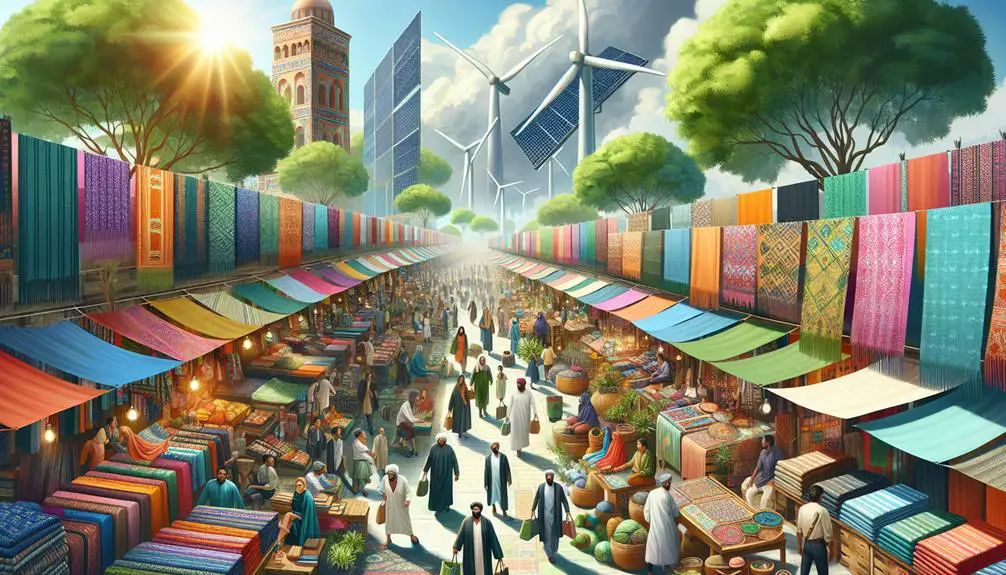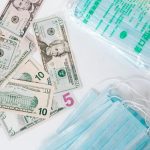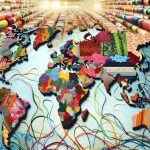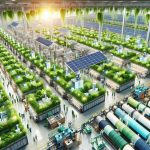Have you ever considered if the adoption of sustainable fabrics truly boosts local economies as some theories suggest? By examining the role of job creation, where skilled labor is essential, you'll uncover how training programs in eco-friendly techniques open up niche market opportunities. Small businesses often prioritize ethical labor practices, attracting eco-conscious consumers from around the globe. Additionally, innovation in sustainable fabrics doesn't just cut costs but also secures a long-term investment in brand image and customer loyalty. You might find the economic ripple effects more profound than initially thought.
Table of Contents
Key Takeaways
- Sustainable fabrics create jobs by supporting local economies and requiring skilled labor.
- Eco-friendly practices reduce production costs through waste reduction and energy efficiency.
- Consumer demand for sustainable fabrics drives market growth and international expansion.
- Investment in sustainable fabrics boosts brand image and customer loyalty over time.
- Innovations in sustainable fabrics enhance product quality and open new market opportunities.
Job Creation
Embracing sustainable fabrics can lead to significant job creation in various sectors. By opting for local sourcing, you're supporting regional farmers and manufacturers, which directly boosts local economies. It's not just about the end product; the entire supply chain benefits.
From the cultivation of organic cotton to the processing of bamboo fibers, each step requires skilled labor. Skill development plays a vital role here. As the demand for sustainable fabrics grows, there's a need for workers who are adept in eco-friendly production techniques. Investing in training programs helps workers acquire new skills, making them more valuable in the job market.
You'll find that these workers aren't just more skilled but also more committed to sustainable practices. Moreover, adopting sustainable fabrics encourages the creation of niche markets, where specialized skills are in high demand. This can lead to the rise of small and medium enterprises focused on eco-friendly textiles. These businesses often prioritize ethical labor practices, ensuring fair wages and safe working conditions.
Market Expansion
Sustainable fabrics open new market opportunities by appealing to eco-conscious consumers who prioritize environmental responsibility in their purchasing decisions. You'll find that this shift in consumer demand isn't limited to local markets—it has a global reach.
As more people become aware of the environmental impact of their choices, they're more likely to seek out brands that offer sustainable alternatives. This trend boosts the potential for international expansion and taps into previously untapped markets.
By integrating sustainable fabrics into your product line, you can leverage an expanded supply chain and optimized distribution channels. This involves sourcing materials from eco-friendly suppliers and ensuring your logistics align with sustainable practices. You'll not only meet the growing demand but also set a precedent for ethical business practices.
Moreover, the market expansion isn't just about selling more products; it's about building brand loyalty and a dedicated consumer base that values sustainability. As you adapt to these changes, you'll find that sustainable fabrics aren't just a trend—they're a driving force for long-term growth.
Embracing this shift can position your business at the forefront of a global movement, ensuring you stay competitive in an ever-evolving market.
Innovation and R&D
Leveraging the momentum from market expansion, businesses must now invest in innovation and R&D to develop cutting-edge sustainable fabrics that meet evolving consumer demands. To stay ahead, you need to foster collaborative partnerships that drive technological advancements. By working closely with research institutions, suppliers, and even competitors, you can create a synergy that accelerates fabric innovation.
Focus on integrating the latest technologies to enhance fabric properties, such as durability, comfort, and environmental impact. For example, advancements in bio-based materials and recycling technologies offer promising avenues for sustainable fabric development. Your commitment to R&D not only differentiates your products but also positions your brand as a leader in sustainability.
Here's a quick overview of key areas to focus on:
| Focus Area | Benefits |
|---|---|
| Collaborative Partnerships | Shared knowledge and resources |
| Technological Advancements | Superior fabric properties |
| Consumer Feedback | Tailored product development |
Cost Savings
Reducing costs in sustainable fabric production can significantly boost your bottom line while maintaining eco-friendly practices. By optimizing your supply chain, you can achieve notable production efficiency, reducing waste and lowering expenses. Streamlining processes and adopting innovative technologies not only trims costs but also aligns with the increasing consumer demand for environmentally responsible products.
Focusing on the environmental advantages of sustainable fabrics can enhance your brand's reputation, attracting a more conscientious customer base. Implementing practices like recycling water, using organic dyes, and sourcing materials locally can lower expenses and minimize your ecological footprint. These measures not only make your production more efficient but also resonate with consumers who prioritize sustainability in their purchasing decisions.
Furthermore, investing in sustainable practices can lead to long-term cost savings. For example, efficient energy use and waste reduction can decrease utility bills and disposal expenses. By re-evaluating your supply chain and opting for suppliers who share your commitment to sustainability, you can negotiate better prices and guarantee a consistent flow of eco-friendly materials. Embracing these strategies can create a competitive edge, driving both economic and environmental benefits, ultimately meeting the demands of a market increasingly focused on sustainability.
Long-term Investment
Investing in sustainable fabrics is a strategic move that can yield significant long-term benefits for your business. You're not just responding to current trends; you're positioning your company to thrive in a future where environmental benefits and consumer demand align more closely than ever.
Firstly, adopting sustainable fabrics can enhance your brand image. Consumers are increasingly prioritizing eco-friendly products and are willing to pay a premium for them. This growing consumer demand for sustainable goods means you'll see a boost in customer loyalty and potentially higher profit margins.
Moreover, sustainable fabrics often involve innovative materials and processes that can lead to cost efficiencies over time. While the initial investment might be higher, the durability and reduced environmental footprint of these materials can lower your long-term operational costs.
Think of it as an investment in both your company's future and the planet's health.
Frequently Asked Questions
How Do Sustainable Fabrics Affect Consumer Purchasing Behavior?
You're torn between fast fashion and sustainable trends. Ethical sourcing and eco-friendly practices attract you. The fashion industry's shift towards sustainability influences your purchasing behavior, making you more conscious and selective about what you buy.
What Are the Environmental Benefits of Using Sustainable Fabrics?
You'll find that sustainable fabrics offer significant environmental benefits. They help reduce waste and boast a lower carbon footprint. By choosing these materials, you're actively contributing to a healthier planet and demonstrating environmental stewardship.
How Do Sustainable Fabrics Compare in Durability With Traditional Fabrics?
When comparing durability, you'll find that sustainable fabrics often match or exceed traditional fabrics. The fabric lifespan of materials like organic cotton or recycled polyester demonstrates impressive resilience, ensuring you don't sacrifice durability for sustainability.
What Certifications Exist for Verifying Sustainable Fabrics?
Think of certifications as the passport to trust. You'll find certification standards like GOTS, OEKO-TEX, and Fair Trade. These verification processes guarantee fabrics meet rigorous environmental and ethical benchmarks, providing confidence in sustainable choices.
How Can Consumers Identify Truly Sustainable Fabrics?
To identify truly sustainable fabrics, you'll need to rely on fabric certifications and consumer education. Look for labels like GOTS, OEKO-TEX, and Fair Trade. Educate yourself about these certifications to make informed, eco-friendly choices.
- How Does Ring Spun Cotton Affect Garment Fit and Shape Retention? - August 13, 2024
- What Are the Challenges in Producing Ring Spun Cotton? - August 13, 2024
- Is Ring Spun Cotton Suitable for Plus-Size Clothing? - August 13, 2024







